Why Dog Training by Age Matters
Training needs shift significantly as dogs grow. A young puppy's first weeks are crucial for socialization and basic manners, while adolescent dogs need structure to manage their energy and behavior. Older dogs may require more behavior-focused work, but they are still highly trainable. Our insights are based on 10+ years of real-world dog training data from All Dogs Unleashed.
This data shows how owners approach training at different stages and how effective outcomes can be achieved with proper training programs—regardless of age. Professional trainers know how to tailor a training plan to match a dog’s development, supporting good behavior and long-term success.
The Dog Training Timeline in Real Life
Over the past decade, we’ve trained thousands of dogs in Dallas-Fort Worth. One thing we’ve learned: timing makes a big difference in behavior outcomes. Most dog owners begin training between 4 to 6 months old, with another common window at 1 to 2 years. These aren’t arbitrary numbers—they align with clear changes in energy, focus, and maturity.
We often see new puppy owners looking for help with early socialization, potty training, or setting a routine. And just as often, we work with adolescent dogs who are getting too strong, too independent, or too wild on leash. Regardless of the starting point, consistent dog training brings results.
While starting early offers big advantages, the right dog training program can transform behavior at any age. That's why our training philosophy is rooted in adaptability—matching every approach to the dog's age, personality, and environment.
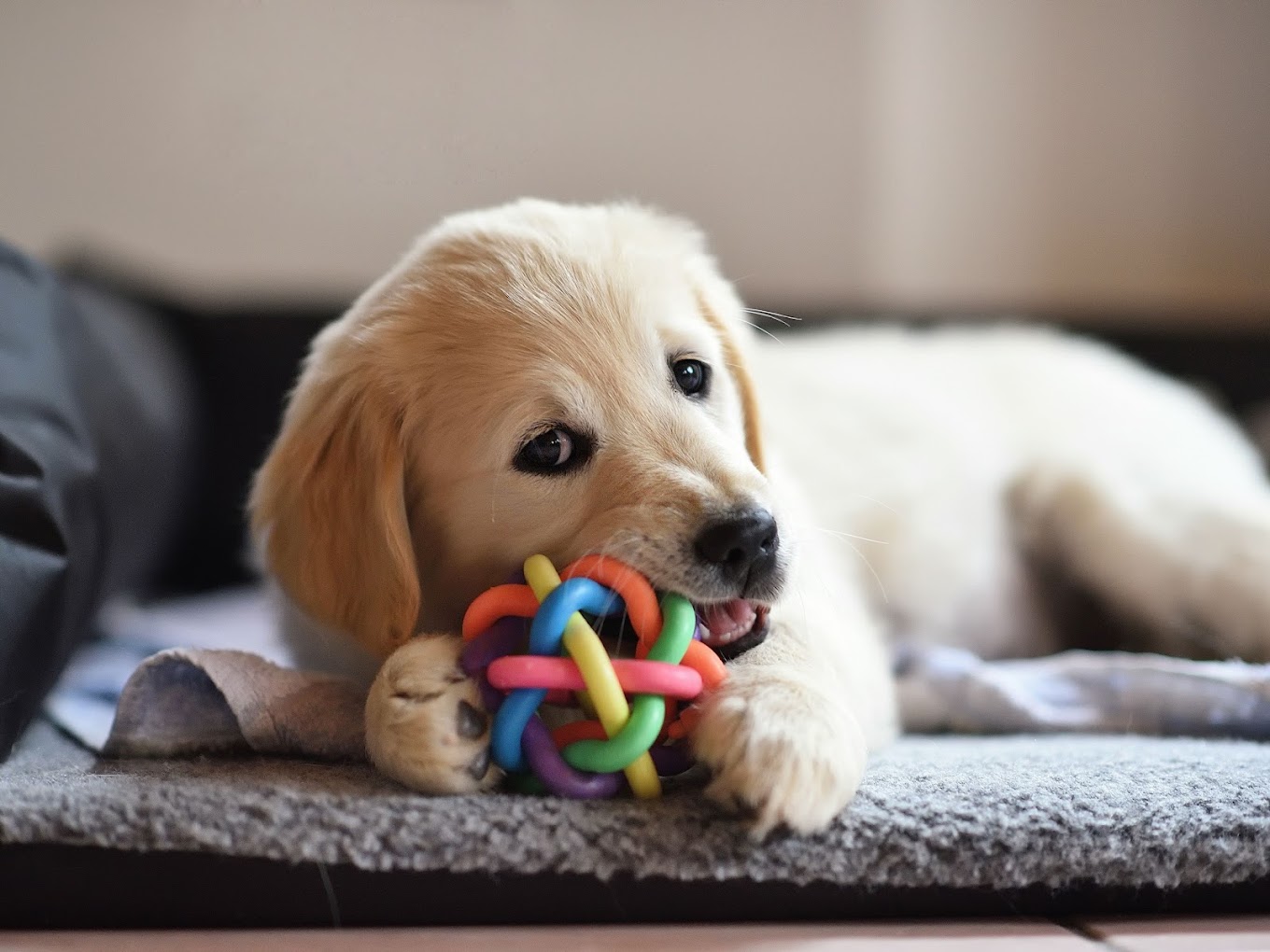
What Our Data Shows About When Dogs Start Training
All Dogs Unleashed has collected over 10 years of enrollment data from our training programs. Here's what we’ve found:
- The majority of dogs begin training between 2 and 8 months of age.
- Enrollment peaks around 5 to 7 months, when most puppies are entering adolescence.
- After 12 months, training enrollments begin to drop—but remain steady among dogs ages 3 and older, especially among adopted pets and those with behavior challenges.
This chart shows a clear curve: early engagement is the norm, but there’s a long tail of owners seeking training later in their dog’s life. That tells us that dog owners recognize the value of training when problems arise—or ideally, before they do.
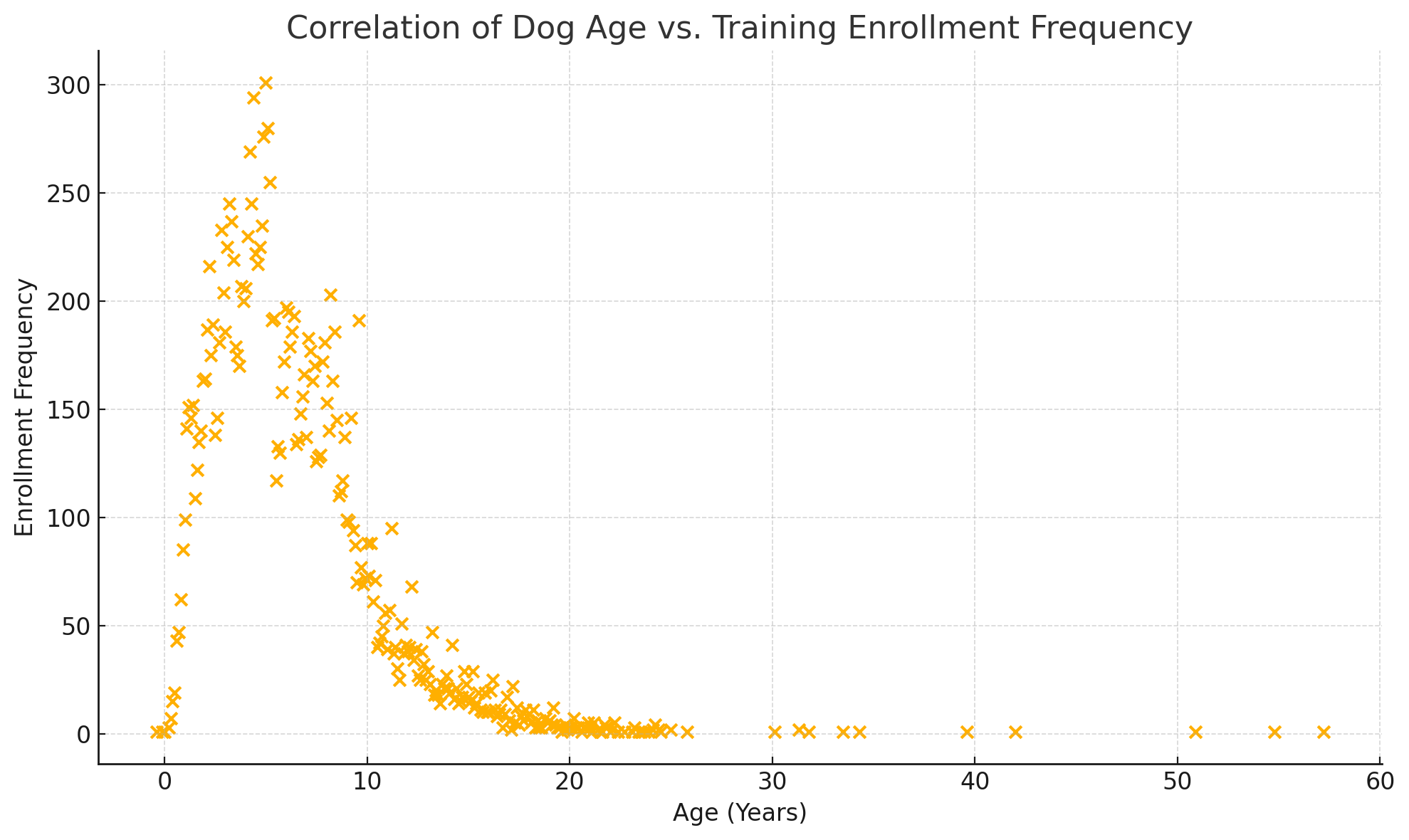
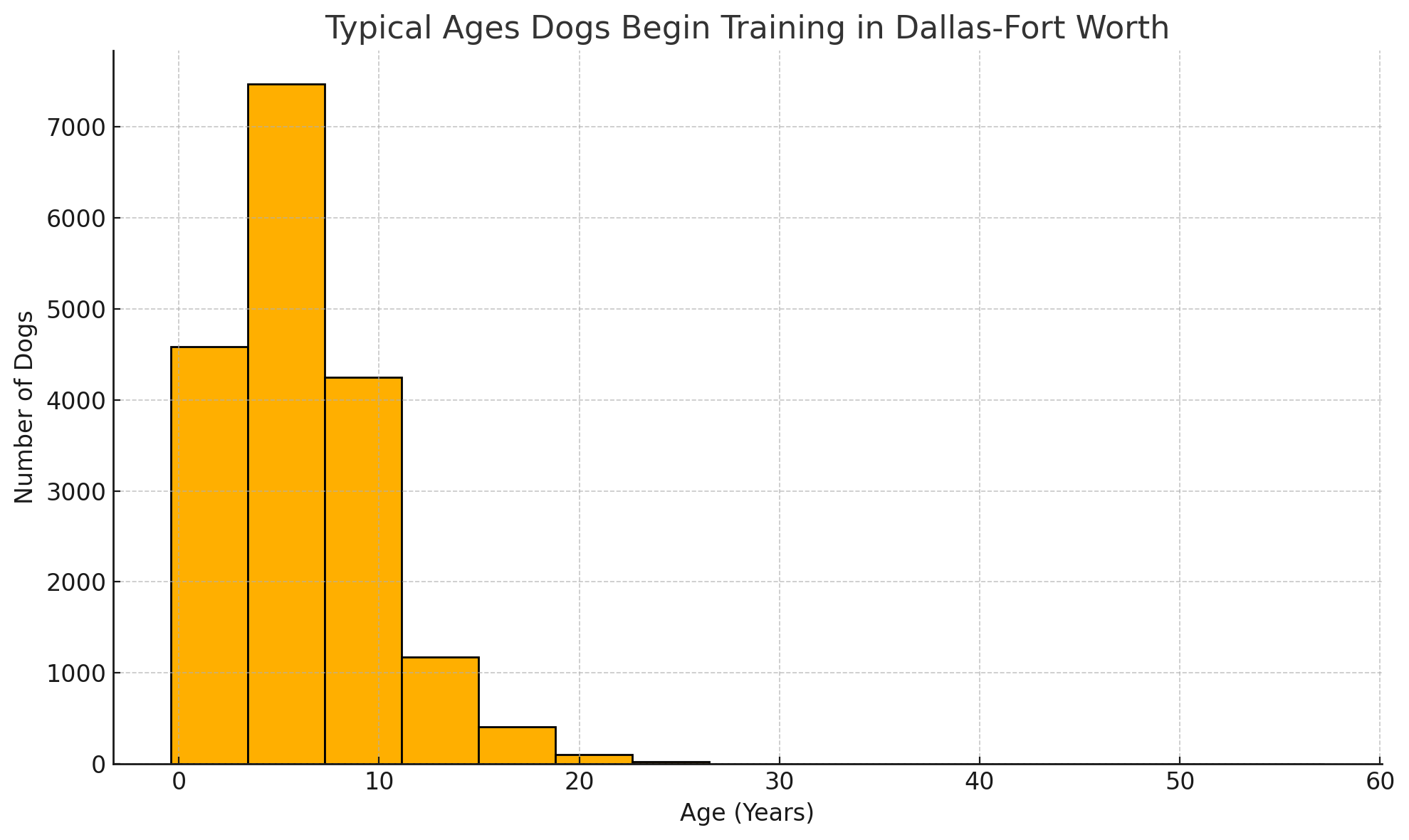
This histogram reflects our Dallas-Fort Worth training population. The largest age group for enrollment is 4–6 months, and nearly all puppies begin training before the age of 1. This supports our belief that early socialization, basic obedience, and a consistent puppy training schedule are the key to raising a confident adult dog.
This data isn’t just numbers—it’s a reflection of what dog owners are experiencing. The demand for puppy training and age-specific programs shows us exactly where our clients need support the most. Whether you're looking for guidance on how to begin training or need help resetting behavior, our programs are built for every stage. Let's explore a dog training timeline and the benefits of training at every stage of your dog's life.
Puppy Training: Building a Foundation Early
So what is the best age to train a dog? Many believe that starting at a young age is key to a strong foundation and forming good habits. For puppies between 8 weeks and 6 months, our focus is on early habits. We help dog owners with structured puppy training schedules that include:
- Housebreaking and potty training routines
- Crate training and positive reinforcement techniques
- Short, age-appropriate training sessions
- Socialization with other dogs and people
- Teaching basic commands like sit, stay, come, and leave it
- Reinforcing basic obedience commands consistently
We also help owners with basic puppy training tips that make life at home easier. From setting up safe play areas to managing chewing, early guidance matters.
While some families prefer private sessions, many benefit from enrolling in our puppy training classes—a great way to build structure while letting your dog socialize and learn in a group environment.
Early-stage training creates a behavioral baseline. Puppies at this age are highly adaptable, and while they may test boundaries, they’re in the perfect window to form lifelong habits. Introducing a predictable routine, working in different environments, and gently setting expectations helps minimize future reactivity, separation anxiety, and destructive behavior.
We also emphasize the importance of exposure: sights, sounds, surfaces, and people. The more experiences your puppy can safely encounter, the more adaptable and confident they’ll become. This early puppy training process lays the groundwork for everything that follows.

What to Expect During the First Few Months
Puppies are fast learners, but they need structure. In the first few months, your goals should be small and consistent: 5- to 10-minute training sessions, 3–5 times a day. This builds familiarity without overwhelming your puppy. This is also the best time to start socialization: car rides, different surfaces, meeting friendly strangers, and safely interacting with other dogs.
Our trainers often recommend starting with a complete puppy training schedule, especially for new dog owners. This includes a daily routine for feeding, potty breaks, crate time, naps, and training sessions. Puppies thrive when they know what to expect, and structure helps reduce overstimulation and behavioral outbursts.
The Adolescent Stage: Where Most Owners Need Help
Between 6 months and 2 years, dogs enter a challenging—but critical—stage in development. This is where we see the most calls from frustrated owners dealing with:
- Pulling on leash
- Jumping on people
- Counter-surfing
- Selective hearing (a.k.a. ignoring commands)
- Over-excitability around other dogs and guests
These dogs aren’t bad—they’re just maturing and testing boundaries. Many skipped puppy training or had inconsistent structure. During this time, we double down on impulse control, advanced obedience training, and clear boundaries.
We often tell clients: adolescent dogs need you to follow through. If your training rules are flexible, your dog’s behavior will be, too. That’s why structured obedience training is so effective in this stage.
The benefit of training at this stage is that most dogs are still highly active and curious. They learn well when challenged and given structure. The challenge is keeping their attention and managing independence.
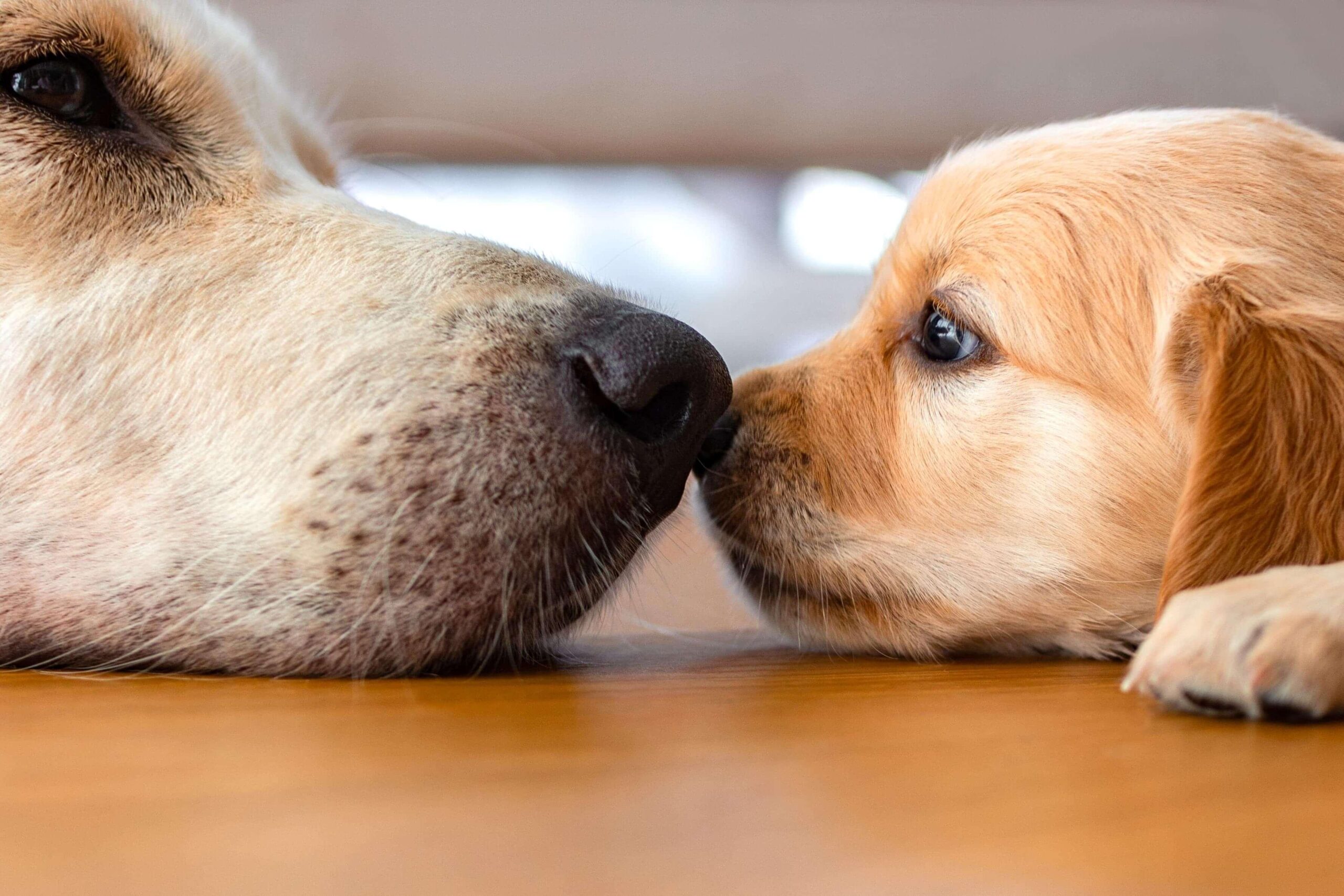
Training Older Dogs: Yes, It Still Works
A lot of people ask, “Is it too late to train my dog?” Our answer: absolutely not.
Dogs over age 3 might take more time, especially if bad habits are well-established, but they’re also capable of incredible change. Our older dog training clients include:
- Rescues with trauma or inconsistent boundaries
- Dogs with leash reactivity or resource guarding
- Stubborn dogs who ignore basic obedience commands
- Households with new babies or lifestyle changes
Training an older dog often involves resetting expectations—for the dog and the owner. We focus on positive reinforcement, slow exposure to new situations, and rebuilding trust.
Just like with puppies, success comes from consistency. You might not see changes overnight, but you’ll see a shift over weeks of smart, repetitive practice. The benefit here is that older dogs are often calmer and more settled—so once they understand what’s expected, they tend to follow through.
What This Means for Dallas-Fort Worth Dog Owners
If you're a dog owner in DFW, this data gives you insight into how other local owners approach training. The majority begin training within the first year, but thousands have come to us later in their dog’s life—with just as much success.
The takeaway? It’s never too early—or too late—to begin training your puppy or dog. Starting early can prevent behavioral issues before they develop, but even adult dogs can benefit from structured support.
We recommend dog owners in Dallas-Fort Worth explore age-appropriate programs that match where your dog is right now. Whether you’re just starting out or correcting long-standing habits, training will improve communication, confidence, and calm in your home.
Our Approach to Age-Appropriate Dog Training
At All Dogs Unleashed, our training programs are shaped by real-world data and decades of hands-on experience. We know what works because we’ve helped thousands of dogs—from rowdy puppies to reactive rescues—become calmer, happier companions.
Our training evolves based on your dog’s stage:
- Young puppies: Early socialization, potty training, crate conditioning, and basic obedience commands using positive reinforcement.
- Teenage dogs: Strong boundaries, obedience training drills, distraction-proofing, and impulse control.
- Adult dogs: Breaking habits, building new routines, working through behavior issues with custom plans.
Whether you're choosing our Board & Train program or In-Home Dog Training, every session is designed with your dog’s development in mind. We also offer puppy training classes, and tailored guidance to help you begin training the right way.

Ready to Start Training? We’re Here to Help
Training isn’t just about commands—it’s about communication. We help you understand what your dog needs, how they think, and how to get results that last.
If you're ready to begin training your puppy, adolescent dog, or adult rescue, All Dogs Unleashed is here to support you with personalized guidance backed by real results.
Let’s build a confident, well-behaved dog together—starting today.
Frequently Asked Questions
Most puppies are ready for basic training by 8 weeks old. This is the perfect time to begin socialization, potty training, and simple commands. Starting early helps prevent problem behaviors from developing and allows you to shape your dog’s behavior from the ground up. It also builds your bond with your puppy right from the start using gentle structure and positive reinforcement techniques.
Yes! Older dogs can absolutely learn new behaviors with consistency and positive reinforcement. Many of our adult dog training clients come to us with habits that need to be adjusted or replaced. With the right mix of structure, patience, and motivation, we see incredible progress in dogs of all ages. It’s never too late to begin training if you use the right techniques and stick to a consistent schedule.
A full puppy training schedule includes crate time, potty breaks, play sessions, obedience lessons, naps, and feeding at regular times. It helps create a predictable routine that supports behavioral consistency and reduces anxiety. Our programs also integrate socialization opportunities and positive reinforcement so your puppy learns manners in a safe, supportive way.
For young puppies, training sessions should be short—typically 5 to 10 minutes, several times a day. This keeps their attention while reinforcing learning through repetition. Older dogs can handle longer sessions—usually 15 to 30 minutes—especially when you're working on more advanced obedience training or behavior changes. We recommend ending every session on a positive note to maintain engagement and confidence.
Every dog should master foundational obedience cues like sit, stay, come, leave it, heel, down, and recall. These commands are not only helpful—they’re essential for safety, especially in public or high-distraction environments. Teaching these through positive reinforcement gives dogs clarity and builds trust. We also offer basic obedience training programs to help your dog consistently respond, even around distractions.
